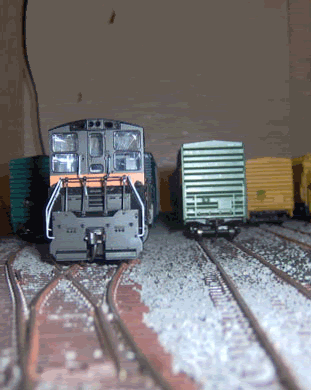Hey Y'all,
I'm building a layout with Atlas 100 36" flex that will have two lines side by side. Planning 24" radius turns, wtih no oversize rolling stock and all diesel engines, no long Big boys. Although I plan on about 8 switches, I havent yet selected the size or type.
Here are my questions:
Q. 1. How much distance from the center line of one track to the center line of the other, that parallels it, should I plan?
Q. 2. Is there a relationship of the distance between the track and the size/number type of switch? i.e #6, #8 or whatever, both to connect the lines and to have branches? ( I plan not to use any switches in the curves/turns.)
Q. 3. Are there any special things I should watch for - besides some expansion joints to keep from buckling track -- when I use 36" flex track and the switches?
Thanks,
SteveInBama
I'm building a layout with Atlas 100 36" flex that will have two lines side by side. Planning 24" radius turns, wtih no oversize rolling stock and all diesel engines, no long Big boys. Although I plan on about 8 switches, I havent yet selected the size or type.
Here are my questions:
Q. 1. How much distance from the center line of one track to the center line of the other, that parallels it, should I plan?
Q. 2. Is there a relationship of the distance between the track and the size/number type of switch? i.e #6, #8 or whatever, both to connect the lines and to have branches? ( I plan not to use any switches in the curves/turns.)
Q. 3. Are there any special things I should watch for - besides some expansion joints to keep from buckling track -- when I use 36" flex track and the switches?
Thanks,
SteveInBama


